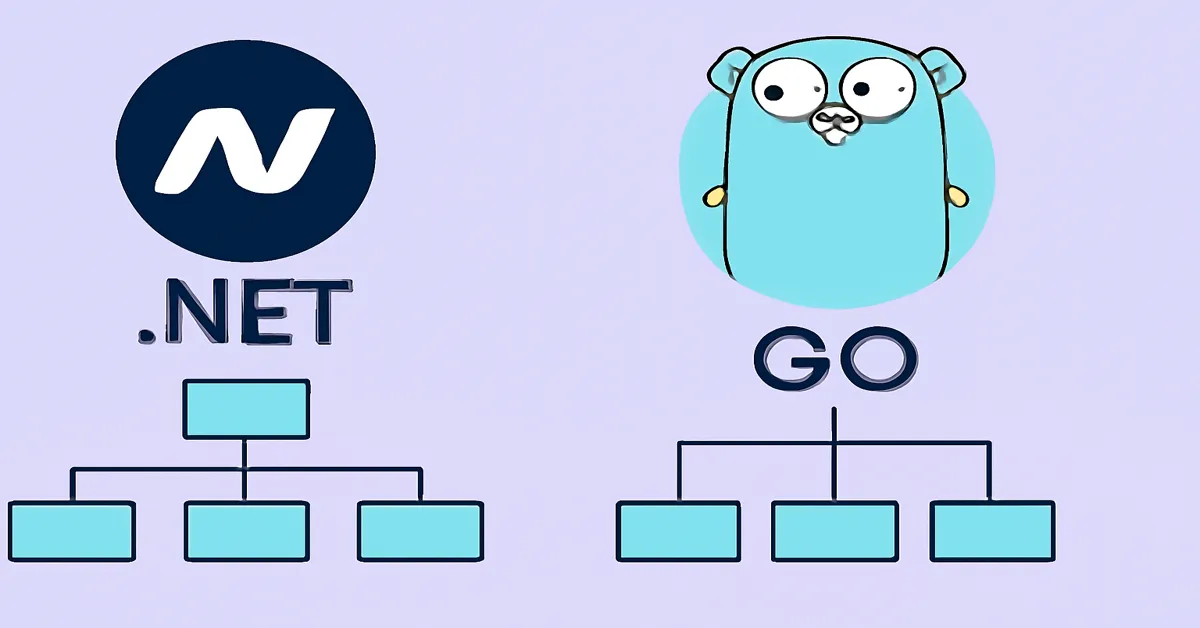In the ever-evolving world of software development, managing complexity while ensuring scalability, performance, and maintainability is paramount. One of the most important techniques developers rely on is modularization—breaking down a large system into smaller, manageable, reusable components or modules. Both .NET and Golang (Go) offer powerful mechanisms for module management, and each follows a distinct approach to achieve modularity. In this article, we will delve into the world of .NET and Golang modules, examining their differences, benefits, best practices, and use cases, to provide you with a detailed understanding of how these module systems work.
The modern approach to software architecture has evolved to focus on modular systems, which not only make code easier to maintain and debug but also promote reusability and scalability. Whether you are a software engineer working with enterprise systems in .NET or building fast, concurrent applications with Golang, understanding modules—the building blocks of any large-scale software—is essential. This guide provides you with the insights necessary to master both ecosystems, ensuring that you can leverage modules in the most effective way possible.
The Importance of Modules in Modern Software Development
Before diving into the specific module systems in .NET and Golang, it’s important to understand why modularity is critical in the development of robust, scalable, and maintainable software.
What Are Modules?
In the context of software development, a module is a self-contained unit of functionality, encapsulating a particular piece of code, data, or functionality. It allows for decoupling, meaning that one module’s functionality can be updated, replaced, or reused without affecting the entire system. This enables developers to organize their code into separate pieces that can be worked on independently, promoting collaboration and reducing complexity.
The main advantages of using modules in software development include:
- Reusability: Modules can be reused in multiple parts of the system or even in other projects.
- Separation of Concerns: Each module can focus on a specific task or feature, reducing the risk of overlap and increasing maintainability.
- Scalability: As applications grow, modularity allows you to scale the system without dealing with a monolithic structure.
- Ease of Debugging and Testing: Isolated modules are easier to test and debug independently.
Now that we understand the importance of modules, let’s explore how .NET and Golang handle modularity.
Section 1: Modules in .NET: Structure, Benefits, and Best Practices
What Are .NET Modules?
In .NET, modules are typically represented by assemblies, which are collections of code and data that the Common Language Runtime (CLR) uses to execute. Assemblies in .NET can be in the form of DLLs (Dynamic Link Libraries) or EXEs (executables). These assemblies contain metadata, which describes the types, methods, properties, and other information about the module.
In .NET, a module may refer to a piece of code that:
- Encapsulates related classes and functions
- Is self-contained and reusable across different parts of an application
- Can be compiled into assemblies that are executed by the CLR
.NET modularity is based on this structure of assemblies and namespaces, allowing developers to divide the code into logically cohesive and reusable components.
The Structure of .NET Modules
The structure of a module in .NET is organized into class libraries, which are reusable units of code that may contain one or more classes. These class libraries can be bundled into a NuGet package, which makes it easier to distribute and manage versions of the module.
Example: Creating a Simple Module in .NET
In .NET, you would typically define a module by creating a class library that encapsulates specific functionality.
csharpCopy// Module: GeoCalculator.cs
namespace MapApp.Utilities
{
public class GeoCalculator
{
public double CalculateDistance(double lat1, double lon1, double lat2, double lon2)
{
// Basic Haversine formula for distance calculation
double R = 6371; // Earth radius in kilometers
double dLat = (lat2 - lat1) * Math.PI / 180.0;
double dLon = (lon2 - lon1) * Math.PI / 180.0;
double a = Math.Sin(dLat / 2) * Math.Sin(dLat / 2) + Math.Cos(lat1 * Math.PI / 180.0) * Math.Cos(lat2 * Math.PI / 180.0) * Math.Sin(dLon / 2) * Math.Sin(dLon / 2);
double c = 2 * Math.Atan2(Math.Sqrt(a), Math.Sqrt(1 - a));
return R * c; // Returns the distance in kilometers
}
}
}
This module can be compiled into a DLL that other parts of the system can access, making the GeoCalculator class reusable across multiple applications and components.
Best Practices for Modularization in .NET
When working with modules in .NET, following best practices can make your application more maintainable, testable, and scalable:
- Separation of Concerns: Each module should have a clear, focused responsibility. Avoid adding unrelated features to a single module.
- Use Dependency Injection: Use dependency injection (DI) to manage dependencies between modules, promoting loose coupling and easier testing.
- Version Control: If you’re using third-party modules via NuGet, ensure proper version control to avoid issues with breaking changes.
- Encapsulate Logic: Minimize dependencies between modules. Keep the logic within each module isolated, so they are easier to test and replace when necessary.
- Document Modules Properly: Make sure your modules are well-documented to help other developers understand their purpose and functionality.
Section 2: Golang Modules – A Lean and Concurrent Approach
What Are Golang Modules?
Golang introduced modules in Go 1.11, marking a shift away from the previous GOPATH-based project structure. A Go module is a collection of Go files that are versioned and grouped together, defined by a go.mod file that describes the module and its dependencies.
Go’s approach to modules is minimalist, focusing on simplicity and performance. Instead of dealing with complex dependency management systems, Go modules provide a straightforward way to manage dependencies and versioning.
Key Features of Golang Modules:
go.modFile: This file defines the module and its dependencies.- Automatic Versioning: Go modules handle automatic versioning of dependencies, ensuring consistency across different environments.
- Simplified Workflow: The
go getcommand allows for easy installation and management of dependencies.
The Structure of Go Modules
Go modules are structured around the go.mod file, which defines the module and its dependencies. A Go module can contain multiple Go files that are logically grouped together to provide specific functionality.
Example: Creating a Simple Module in Go
Creating a Go module is straightforward. First, create a go.mod file in the root directory of your project:
bashCopymodule github.com/myuser/mymodule
go 1.18
Then, add your Go source code:
goCopy// Module: geo_calculator.go
package geo
import "math"
// CalculateDistance computes the distance between two lat/lon coordinates using the Haversine formula
func CalculateDistance(lat1, lon1, lat2, lon2 float64) float64 {
R := 6371.0 // Earth's radius in kilometers
dLat := (lat2 - lat1) * math.Pi / 180.0
dLon := (lon2 - lon1) * math.Pi / 180.0
a := math.Sin(dLat/2)*math.Sin(dLat/2) + math.Cos(lat1*math.Pi/180.0)*math.Cos(lat2*math.Pi/180.0)*math.Sin(dLon/2)*math.Sin(dLon/2)
c := 2 * math.Atan2(math.Sqrt(a), math.Sqrt(1-a))
return R * c
}
Now you have a Go module that can be used in other Go projects, or exported as a package.
Best Practices for Golang Modules
- Minimize External Dependencies: Go encourages a minimalist approach, so use external dependencies sparingly and ensure they’re well-documented.
- Modularize Code by Functionality: Similar to .NET, ensure each module has a single responsibility and doesn’t become a catch-all for unrelated code.
- Use Versioning for Dependencies: Always declare dependencies explicitly in the
go.modfile and manage them withgo get. - Testing and Documentation: Go heavily promotes testing. Ensure each module has corresponding unit tests, and document your functions with clear comments.
Section 3: Key Differences Between .NET and Golang Modules
While both .NET and Golang offer module systems, they differ in several ways, especially in terms of architecture and design philosophy.
3.1 Modularity in .NET vs. Golang
- Complexity: .NET’s modular system is built to handle complex enterprise solutions. It provides a rich ecosystem of libraries, frameworks, and tools like NuGet, Entity Framework, and ASP.NET Core. In contrast, Golang’s modules are much simpler and focus on speed and concurrency, with a streamlined, minimalist approach.
- Dependency Management: .NET uses NuGet to manage dependencies, with a powerful versioning system. Golang uses go.mod and go.sum to manage dependencies, ensuring that the right versions are used, but it is designed to be less complicated than NuGet.
- Performance: Go’s module system is optimized for performance and speed, especially when dealing with concurrent applications. .NET’s modules, while highly performant, are better suited for larger, enterprise-grade applications that require extensive abstraction.
3.2 Use Cases
- .NET is often used in enterprise environments, such as banking, healthcare, and government systems where complex business logic is required. It’s suited for web applications, desktop applications, and cloud services.
- Go is favored for cloud-native applications, microservices, and concurrent systems, where performance and ease of scalability are key. Its lightweight nature and simplicity make it a great choice for building scalable APIs, infrastructure tools, and backend services.
Conclusion: Leveraging .NET and Golang Modules
Both .NET and Golang offer robust and efficient module systems that can significantly improve the development process. Understanding the nuances of each platform’s modularity will help you choose the right approach based on the requirements of your project. Whether you’re building a scalable microservice architecture with Go or a complex enterprise solution with .NET, leveraging modules effectively will make your application more maintainable, reusable, and scalable.
By adopting best practices for modular development, using appropriate tools, and embracing the power of these modern platforms, you can build software that stands the test of time, delivers high performance, and meets the evolving demands of your users.
Read:
The 30 Most Asked Interview Questions in .NET and Golang: A Developer’s Guide
The History of .NET and Golang: Parallel Journeys in Software Evolution
Deep Inside of the .NET and Golang Platforms: A Technical Exploration
FAQs
1. What is the primary difference between .NET and Golang module systems?
Answer: .NET modules are typically represented by assemblies (.dll or .exe files) that contain compiled code, providing a rich ecosystem for enterprise-level applications. Golang modules are simpler, defined by a go.mod file, and are used to manage dependencies and organize code into packages with a focus on simplicity, concurrency, and performance.
2. How does modularization benefit .NET and Golang applications?
Answer: Modularity allows you to break down large applications into smaller, manageable units, promoting reusability, maintainability, and scalability. In .NET, modules like class libraries and NuGet packages help organize enterprise code, while in Golang, modules (through go.mod) streamline dependency management, making it easier to maintain and scale cloud-native applications.
3. How do I create a module in .NET?
Answer: In .NET, a module is typically created by creating a class library project that compiles into a .dll file. You can define classes, methods, and properties within that library, which can then be reused by other parts of the application. You can also create NuGet packages for distribution.
4. What is a Go module, and how do I use it?
Answer: A Go module is a collection of Go files organized in a directory with a go.mod file that defines the module and its dependencies. You create a module by running go mod init to initialize the module, and you manage dependencies using the go get command. This simplifies dependency management and version control.
5. Which platform is better for modularization: .NET or Golang?
Answer: It depends on your use case. .NET is ideal for building large-scale, enterprise applications with rich libraries and frameworks, making modularization powerful in complex systems. Golang, on the other hand, excels in building simple, lightweight modules for cloud-native applications and microservices, focusing on speed, concurrency, and scalability.











